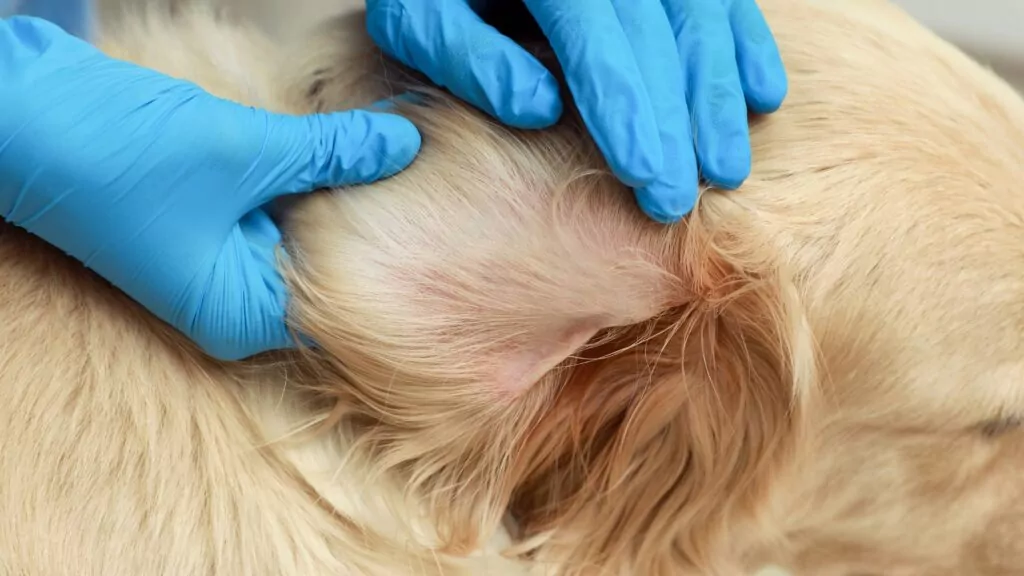Ticks are small parasitic organisms that can transmit dangerous diseases to both dogs and humans through their bites. Carefully checking your dog for ticks and removing them promptly is crucial for protecting your pet’s health. Knowing the signs of tick-borne illnesses allows early veterinary intervention to treat your dog. Preventive measures like grooming, tick checks, and tick control products can help stop ticks before they bite your dog.
Common Signs of Ticks on Dogs
Ticks vary in size, from tiny poppy seeds to large swollen ticks reaching 1 cm in diameter after feeding on a dog’s blood. When searching your dog’s coat, feel for small, firm bumps that may indicate an attached tick. Pay close attention to the head, ears, armpits, toes, and groin area. Watch also for:
- Red, swollen skin at the bite site
- Excessive biting, licking, or scratching
- Scabs or skin crusting
Dogs often tolerate tick bites well initially. But some react to the bite with irritated skin. Others excessively groom if they feel attached ticks. Seeing these signs warrants a thorough tick check.

Recognizing Symptoms of Tick-Borne Diseases
Ticks transmit infectious organisms that cause illness in dogs, including:
- Lyme disease – Bacteria infecting dogs through tick saliva.
- Rocky Mountain spotted fever – Bacteria spread via tick bites.
- Ehrlichiosis – Bacterial disease from infected ticks.
Dogs may show these tick-borne disease symptoms:
- Fever
- Lethargy, tiredness
- Loss of appetite
- Lameness, joint swelling
- Enlarged lymph nodes
Promptly contact your veterinarian if your dog has these symptoms combined with potential tick exposure. Quick diagnosis and treatment are vital, as delay risks serious complications in affected dogs.

Preventing Ticks on Dogs
Stop ticks from harming your dog through these key preventive steps:
Conduct regular tick checks after time outdoors, especially in wooded, brushy areas. Search your dog’s coat thoroughly over their entire body. Prompt tick removal reduces disease risks.
Use veterinary-recommended tick prevention products like collars, topical liquids, sprays, or oral tablets. These kills or repel ticks before they bite. K9 Advantix®II kills through contact, stopping ticks from attaching and feeding.
Groom and brush your dog regularly. Closely combing all areas of your dog’s coat helps remove questing ticks before they bite. Ticks dislike exposure to light and dry environments.
Avoid vegetation and habitats where ticks lurk like tall grasses, bushes, and woodpiles. Stick to open lawn spaces for playtime instead. Ticks wait on vegetation and latch onto passing animals for their next blood meal. Reducing tick exposure lowers risks to your dog’s health.
Conclusion
Left unchecked on dogs, ticks can transmit dangerous and even fatal diseases. Learn to spot ticks on your dog and respond promptly. Watch also for signs of sickness, as only early treatment can manage tick-related illness successfully. Focus proactively on prevention through frequent grooming, tick checks, and ongoing tick control measures. Keeping your dog free of ticks will help assure their continued health. Consult your veterinarian for additional recommendations tailored to protect your pet.
